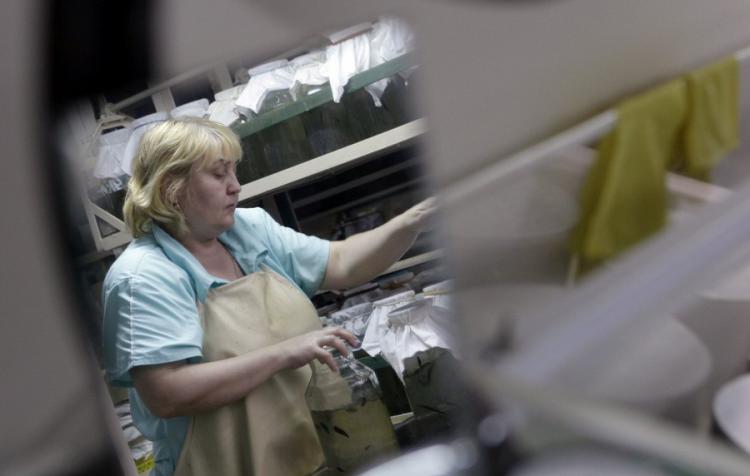|
|
Leech Farm
|
For leeches, the digestive system starts with the jaw, which is located ventrally on the anterior side of the body. It is attached to the pharynx, then the esophagus, extending to the crop, then to the gizzard, which leads to the intestinum, where it ends at the posterior sucker. The crop is a type of stomach that works like an expandable storage compartment. The crop allows a leech to store blood up to five times its body size, and, because the leech produces an anticoagulant, the stored blood remains in a liquid state; because of this ability to hold blood without the blood decaying, due to bacteria living inside the crop, medicinal leeches need to feed only twice a year.
The body of predatory leeches are similar, though some may also have a protrusible proboscis, which is retracted in their mouths. Such leeches are often ambush predators, which lie in wait, and strike their prey using their probosces in a spear-like fashion.
Bacteria in the gut were long thought to carry on digestion for the leech, instead of endogenous enzymes that are very low or absent in the intestine. As discovered relatively recently, all leech species studied, do produce endogenous intestinal exopeptidases, which can unlink free terminal-end amino acids, one monomer at a time, from a gradually unwinding and degrading protein polymer. However, unzipping of the protein can start from either the amino (tail) or carboxyl (head) terminal-end of the protein molecule. The leech exopeptidases (arylamidases), possibly aided by proteases from endosymbiotic bacteria in the intestine, start from the tail or amino end, slowly but progressively removing many hundreds of individual terminal amino acids for resynthesis into proteins that constitute the leech. Since leeches lack endopeptidases, the mechanism of protein digestion cannot follow the same sequence as it would in all other animals in which exopeptidases act sequentially on peptides produced by the action of endopeptidases. Exopeptidases are especially prominent in the common North American worm-leech Erpobdella punctata. This evolutionary choice of exopeptic digestion in Hirudinea distinguishes these carnivorous clitellates from Oligochaeta.
Deficiency of digestive enzymes (except exopeptidases), but, more importantly, deficiency of vitamins, B complex for example, in leeches is compensated for by enzymes and vitamins produced by endosymbiotic microflora. In Hirudo medicinalis, these supplementary factors are produced by an obligatory symbiotic relationship with two bacterial species, Aeromonas veronii and a still-uncharacterized Rikenella species. Nonbloodsucking leeches, such as Erpobdella punctata, are host to three bacterial symbionts, Pseudomonas, Aeromonas, and Klebsiella spp. (a slime producer). The bacteria are passed from parent to offspring in the cocoon as it is formed.
|
|









